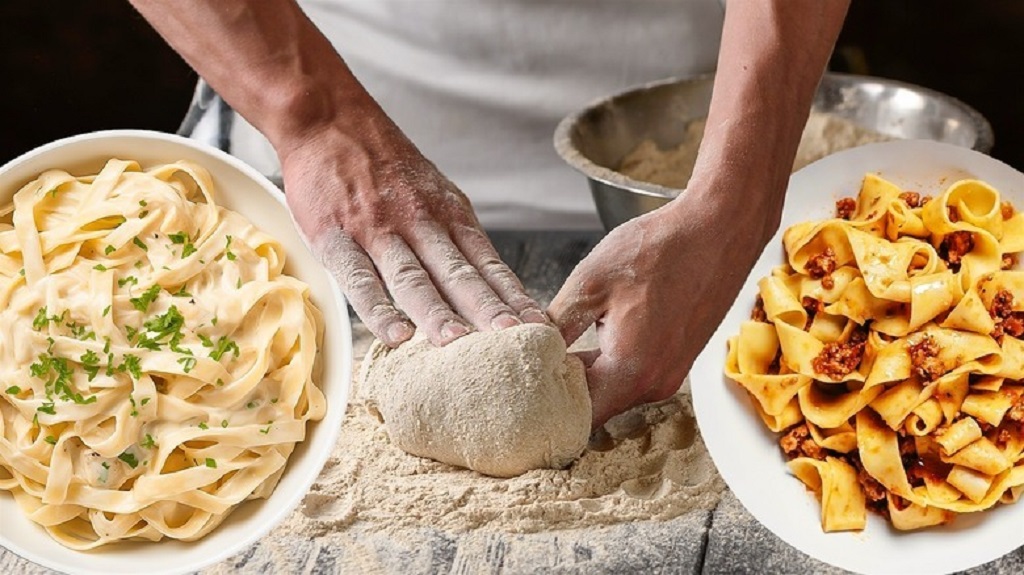
Making fresh pasta at home is a rewarding culinary adventure that brings authentic Italian flavors to your kitchen. However, beginners often face challenges when crafting the perfect dough, leading to frustration. Whether your dough is too sticky, crumbly, or tough, these homemade pasta dough problems can derail your cooking experience. Fortunately, with the right guidance and tools like those offered by Smart Pasta Maker, you can overcome these hurdles and create delicious, restaurant-quality pasta.
Common Issues with Homemade Pasta Dough
Creating pasta dough from scratch seems simple, but small mistakes can lead to big problems. Understanding the most common issues is the first step to mastering the process. For expert advice on resolving these challenges, check out this detailed guide on homemade pasta dough problems. Below, we explore the typical issues beginners encounter and how to fix them.
Dough Is Too Sticky
Sticky dough is a frequent complaint among novice pasta makers. This issue often arises when the dough has too much moisture. Excess water or eggs can make the dough cling to your hands, work surface, or pasta machine, resulting in a messy experience.
To fix sticky dough, gradually add small amounts of flour, about a tablespoon at a time, while kneading. Be cautious not to add too much, as this can make the dough dry. Knead for at least 8-10 minutes until the dough feels smooth and slightly tacky but not sticky. Additionally, ensure your work surface is lightly floured to prevent sticking during rolling.

Dough Is Too Dry or Crumbly
On the opposite end, dry or crumbly dough can be equally frustrating. This problem typically occurs when there’s insufficient liquid or the dough hasn’t been kneaded enough to develop gluten, which binds the ingredients.
To remedy dry dough, sprinkle a small amount of water or egg onto the dough and knead it thoroughly. Start with just a teaspoon of liquid to avoid overcorrecting. If the dough remains crumbly, wrap it in plastic wrap and let it rest for 20-30 minutes. This resting period allows the flour to absorb moisture evenly, improving texture.
Dough Tears When Rolling
Tearing dough is a common issue when rolling it out, whether by hand or with a pasta machine. This can happen if the dough is too dry, hasn’t rested long enough, or is being stretched too quickly.
To prevent tearing, ensure the dough is well-kneaded and rested for at least 30 minutes at room temperature, wrapped tightly in plastic wrap. Resting relaxes the gluten, making the dough more pliable. When rolling, work in small batches and roll gradually, starting with thicker settings on your pasta machine and moving to thinner ones. If tears appear, patch them by pressing the dough together and rolling gently.
Dough Is Too Tough or Chewy
Tough or chewy pasta dough often results from over-kneading or using the wrong flour type. While kneading is essential for developing gluten, excessive kneading can make the dough dense and rubbery.
To avoid tough dough, use “00” flour or all-purpose flour, as recommended by sources like Bon Appétit. These flours provide the right protein content for tender pasta. Knead the dough just until it’s smooth, typically 8-10 minutes by hand. If the dough feels too firm, let it rest longer to soften the texture before rolling.
Dough Shrinks Back When Rolled
If your dough snaps back or shrinks when you try to roll it out, it’s likely too elastic. This elasticity comes from overdeveloped gluten, often caused by excessive kneading or insufficient resting.
To fix shrinking dough, let it rest for an additional 10-15 minutes. Cover it with a damp cloth or plastic wrap to prevent drying out. When rolling, apply gentle, even pressure and avoid stretching the dough too quickly. Patience is key to achieving the desired thickness without resistance.
Tips for Perfect Pasta Dough Every Time
Preventing homemade pasta dough problems starts with proper technique and preparation. Here are some practical tips to ensure success:
- Measure Ingredients Accurately: Use a kitchen scale to weigh flour and liquids for precision. A standard ratio is 100 grams of flour to 1 large egg for one serving.
- Choose the Right Flour: Opt for “00” flour or a mix of all-purpose and semolina flour for a balanced texture, as suggested by The New York Times.
- Knead Thoroughly but Not Excessively: Aim for a smooth, elastic dough without overworking it.
- Rest the Dough: Allow at least 30 minutes of resting time to relax the gluten and improve elasticity.
- Keep Equipment Clean: Ensure your pasta machine or rolling pin is free of dried dough to avoid sticking or tearing.
By following these tips, you’ll minimize common issues and achieve a smooth, workable dough.
Troubleshooting During Cooking
Sometimes, homemade pasta dough problems extend to the cooking process. Undercooked, mushy, or clumpy pasta can ruin your dish. Here’s how to address these issues:
- Undercooked Pasta: Boil pasta in a large pot of salted water and test for doneness a minute before the recommended cooking time. Fresh pasta cooks quickly, often in 2-5 minutes.
- Mushy Pasta: Avoid overcooking by checking the pasta frequently. Drain immediately once al dente and rinse briefly with cold water to stop the cooking process.
- Clumpy Pasta: Stir the pasta immediately after adding it to boiling water to prevent sticking. Use plenty of water to give the pasta room to move.
Tools to Simplify Pasta Making
Investing in quality tools can make a significant difference in your pasta-making journey. A reliable pasta machine, whether manual or electric, ensures consistent thickness and reduces manual effort. Additionally, a sturdy rolling pin and a clean, spacious work surface are essential for hand-rolled pasta. For beginners, using a pasta maker like those from Smart Pasta Maker can streamline the process and help avoid common dough issues.
Read More Also: Packing Flavor, Not Frustration: The Ultimate Guide to Travel Food Storage Utensils
Conclusion
Mastering homemade pasta dough is a skill that takes practice, but understanding and addressing common problems can make the process enjoyable and rewarding. By troubleshooting issues like sticky, dry, or tough dough and following expert tips, you’ll be on your way to creating perfect pasta at home. With patience and the right techniques, your homemade pasta will impress family and friends with its fresh, authentic flavor.
Frequently Asked Questions
1. Why is my pasta dough too sticky?
Sticky dough usually results from too much liquid. Add flour gradually while kneading until the dough is smooth and slightly tacky.
2. How long should I knead pasta dough?
Knead for 8-10 minutes until the dough is smooth and elastic. Over-kneading can make it tough.
3. Can I use all-purpose flour for pasta dough?
Yes, all-purpose flour works well, though “00” flour is ideal for a smoother texture.
4. Why does my pasta dough tear in the pasta machine?
Tearing can occur if the dough is too dry or hasn’t rested long enough. Ensure proper hydration and rest for 30 minutes before rolling.




